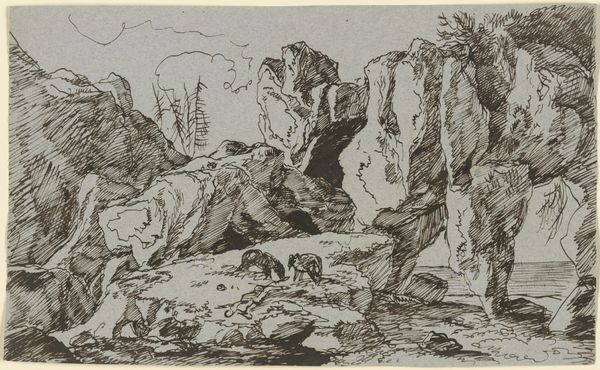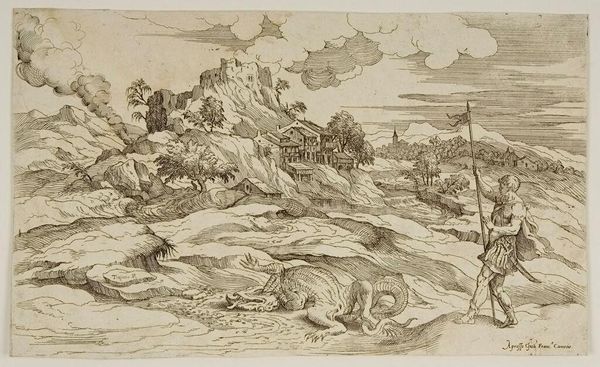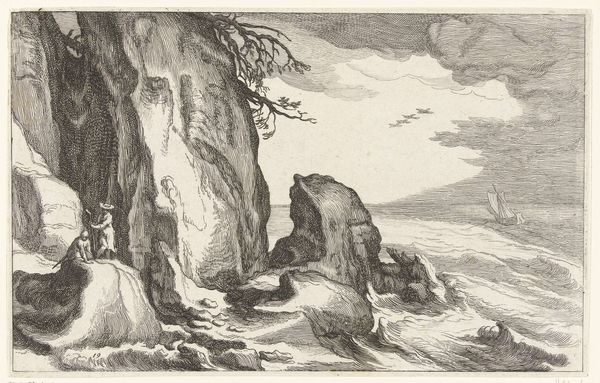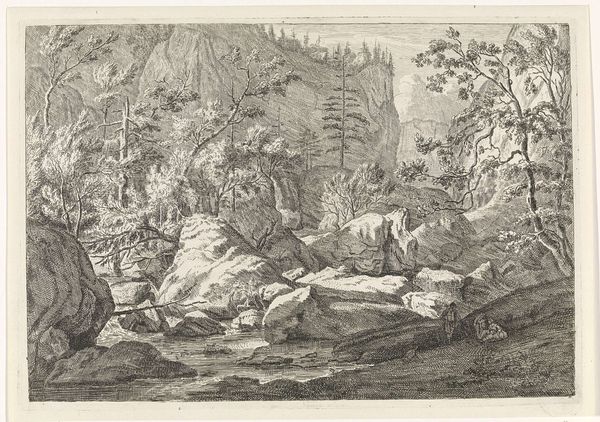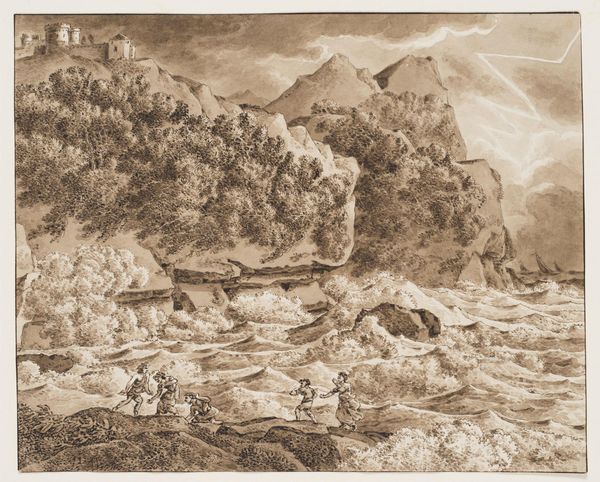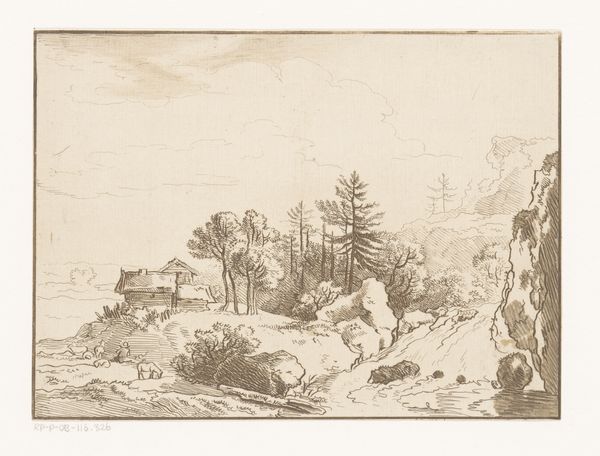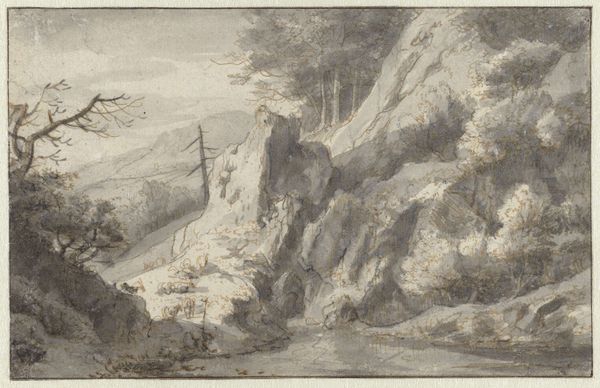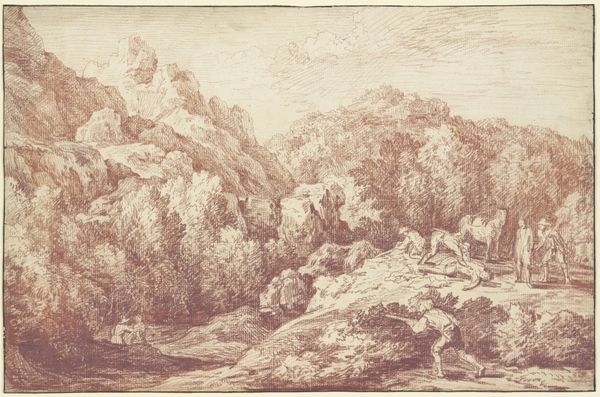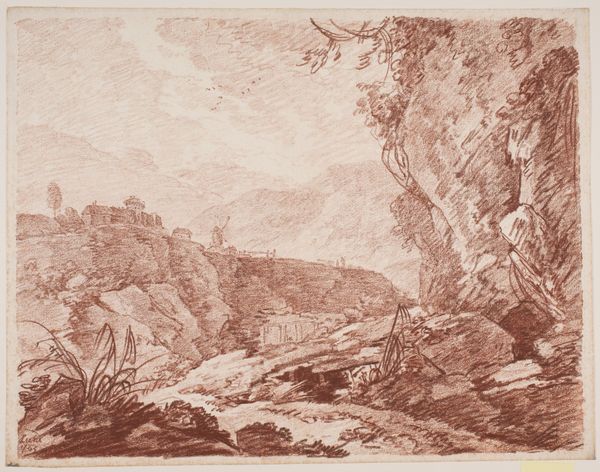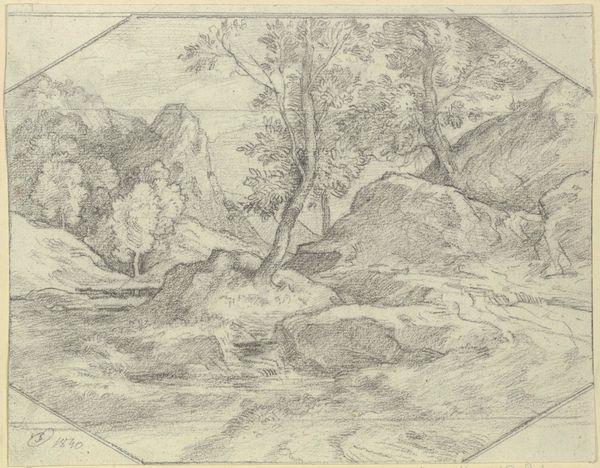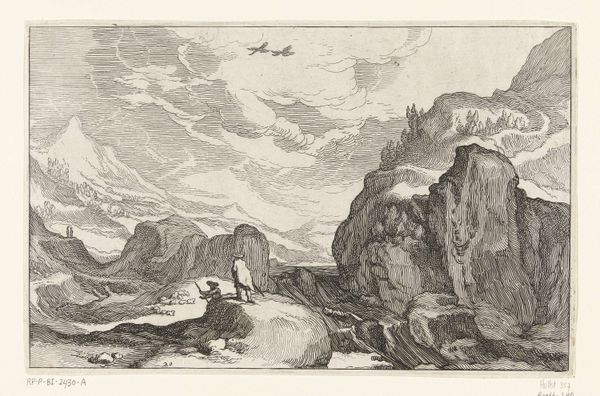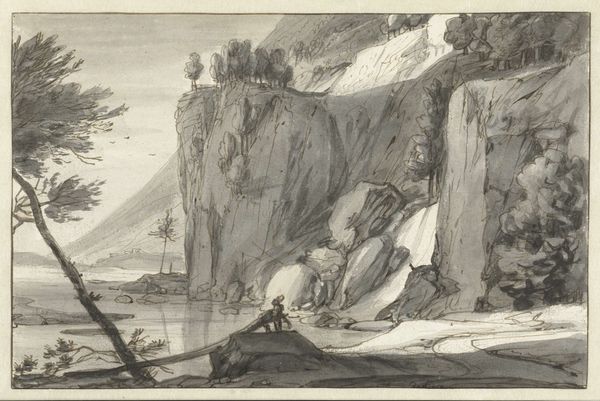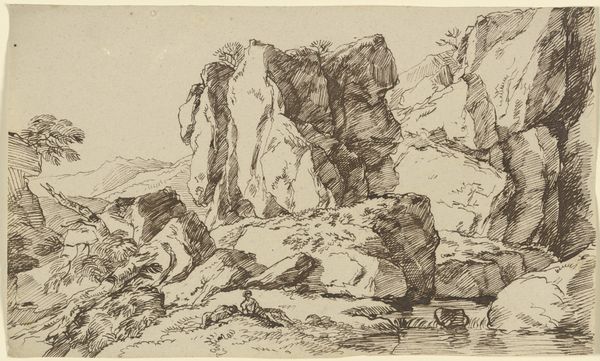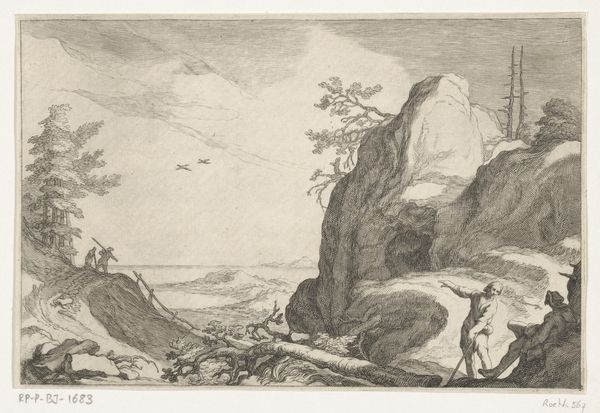
drawing, ink, pen
#
landscape illustration sketch
#
drawing
#
baroque
#
pen illustration
#
pen sketch
#
pencil sketch
#
landscape
#
river
#
personal sketchbook
#
ink
#
ink drawing experimentation
#
pen-ink sketch
#
mountain
#
sketchbook drawing
#
pen
#
storyboard and sketchbook work
#
sketchbook art
Dimensions: height 205 mm, width 322 mm
Copyright: Rijks Museum: Open Domain
Curator: At first glance, I feel a strange tension between the softness of the light and the imposing solidity of the rocks. What strikes you? Editor: A quiet solitude seems to emanate from this sketch. We're looking at "Rocky Landscape with a Draughtsman by a River" by Richard van Orley, crafted sometime between 1673 and 1732 using pen and ink. Curator: Solitude is an interesting read. During the late 17th and early 18th centuries, landscape art was shifting. There's an emphasis on directly observing and recording nature that breaks a bit with idealised classical landscapes of the era. It's almost proto-Romantic. Editor: Yes, the imagery definitely evokes the sublime. The craggy rocks, the hint of ancient ruins in the background... rocks have carried immense symbolic weight throughout art history. Here, the natural world looms over the human figure. But who is the figure here: Is he an explorer, or is he Van Orley sketching a landscape? Curator: The ambiguity of his role, a draughtsman within the drawing, speaks to how artistic identity was evolving in response to new landscapes and experiences. A move toward empirical approaches to art as labor but also exploration? Van Orley’s background as part of the tapestry-making Orley family adds to this. Editor: Absolutely. It resonates on a deeper, cultural level, with nature as both a source of raw materials and of artistic inspiration. Perhaps the figure symbolizes our place in a cyclical cosmos, one in which great monuments dissolve into nature and even artists are consumed by their creations. Curator: And landscape, with all of its resources and potential grandeur, takes a renewed importance during nascent colonialism. This piece becomes part of a broader narrative about power and our relationship with nature. Editor: Very true. The imagery of imposing rocky mountains suggests a permanence against human presence or creations. Even nature's ruins may prevail, serving as a lasting reminder. Thank you for your historical insights. Curator: And thank you for reminding me how nature always carries a charge of our psychological expectations!
Comments
No comments
Be the first to comment and join the conversation on the ultimate creative platform.
